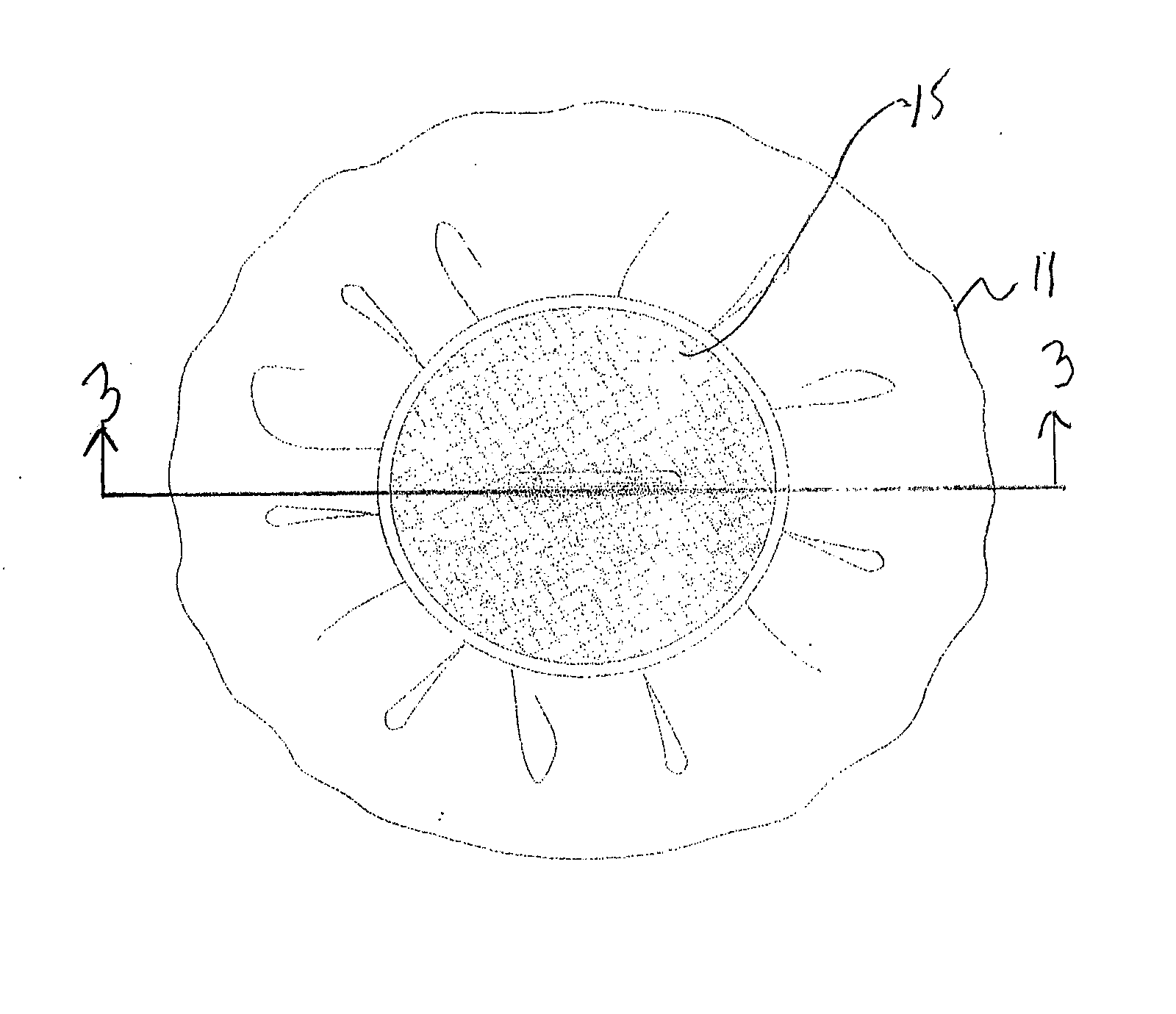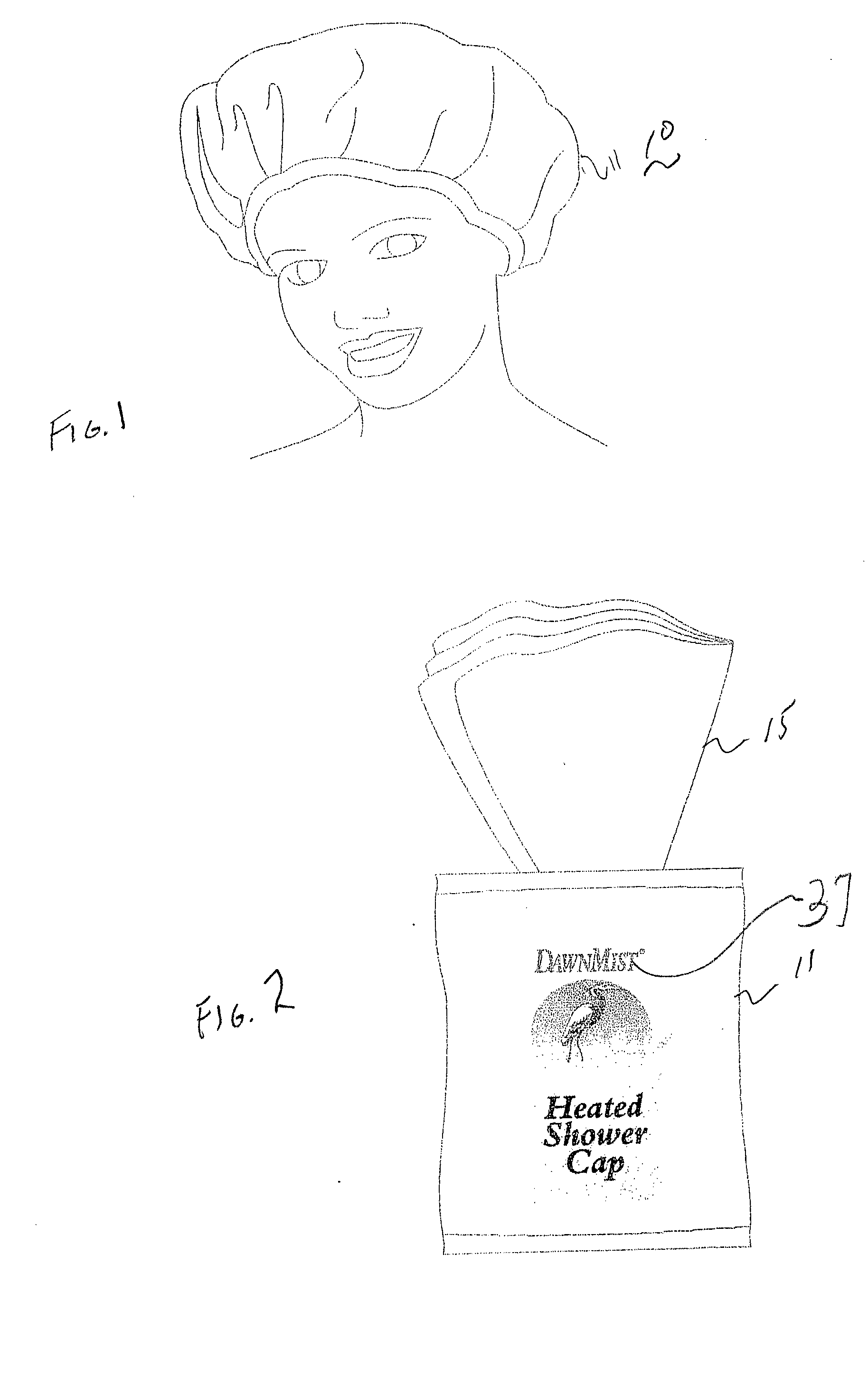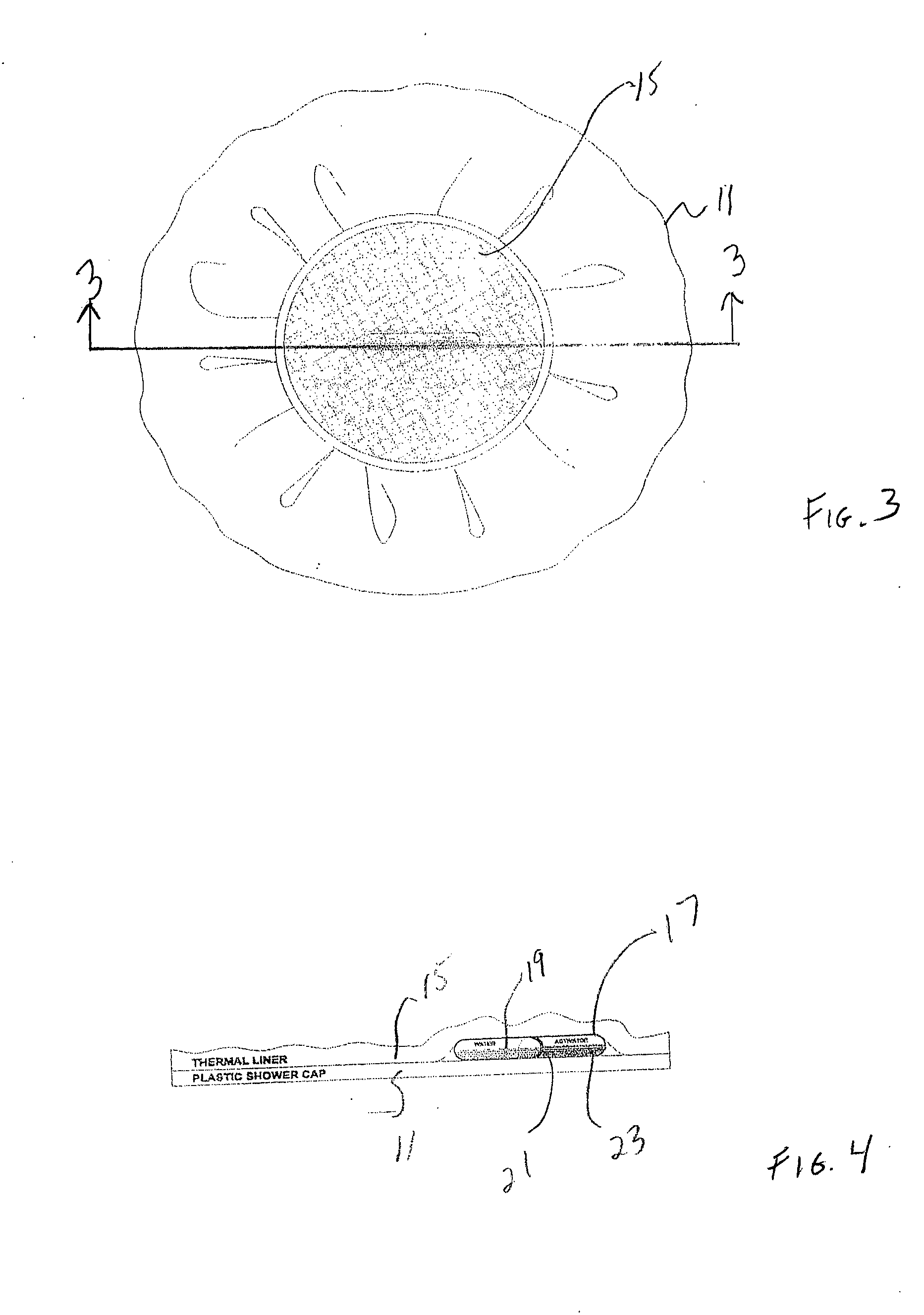Heated shower cap
a shower cap and heat technology, applied in the field of caps, can solve the problems of inability to control hot air and microwave energy, complicated prior art shower caps that use heat in any form, and inability to meet the needs of users, etc., and achieve the effect of simple manufacturing and inexpensive production
- Summary
- Abstract
- Description
- Claims
- Application Information
AI Technical Summary
Benefits of technology
Problems solved by technology
Method used
Image
Examples
Embodiment Construction
[0023] As shown in the figures, the device 10 is a conventional shower cap 11 on a person 13 desiring to keep her or his hair dry in a wet environment such as a shower or bath. The cap 11 includes a liner 15 inside the cap and positioned to contact the hair of the user. Inside the liner 15 is a small ampoule 17 as seen in FIG. 4.
[0024] For the purpose of this invention, the term cap is defined as any of the water impervious caps well known for use in commercial and consumer products. These caps are available in a variety of shapes, sizes, colors and may have designs or images printed or molded thereon.
[0025] The liners of the present invention are heated by an exothermic reaction of supercooled liquid crystallizing into a solid form. Any such material that has the ability to initiate an exothermic reaction without the use of metal or other components may be used. Preferred materials are sodium acetate and sodium carbonate, with the latter being most preferred.
[0026] The container...
PUM
 Login to View More
Login to View More Abstract
Description
Claims
Application Information
 Login to View More
Login to View More - R&D
- Intellectual Property
- Life Sciences
- Materials
- Tech Scout
- Unparalleled Data Quality
- Higher Quality Content
- 60% Fewer Hallucinations
Browse by: Latest US Patents, China's latest patents, Technical Efficacy Thesaurus, Application Domain, Technology Topic, Popular Technical Reports.
© 2025 PatSnap. All rights reserved.Legal|Privacy policy|Modern Slavery Act Transparency Statement|Sitemap|About US| Contact US: help@patsnap.com



